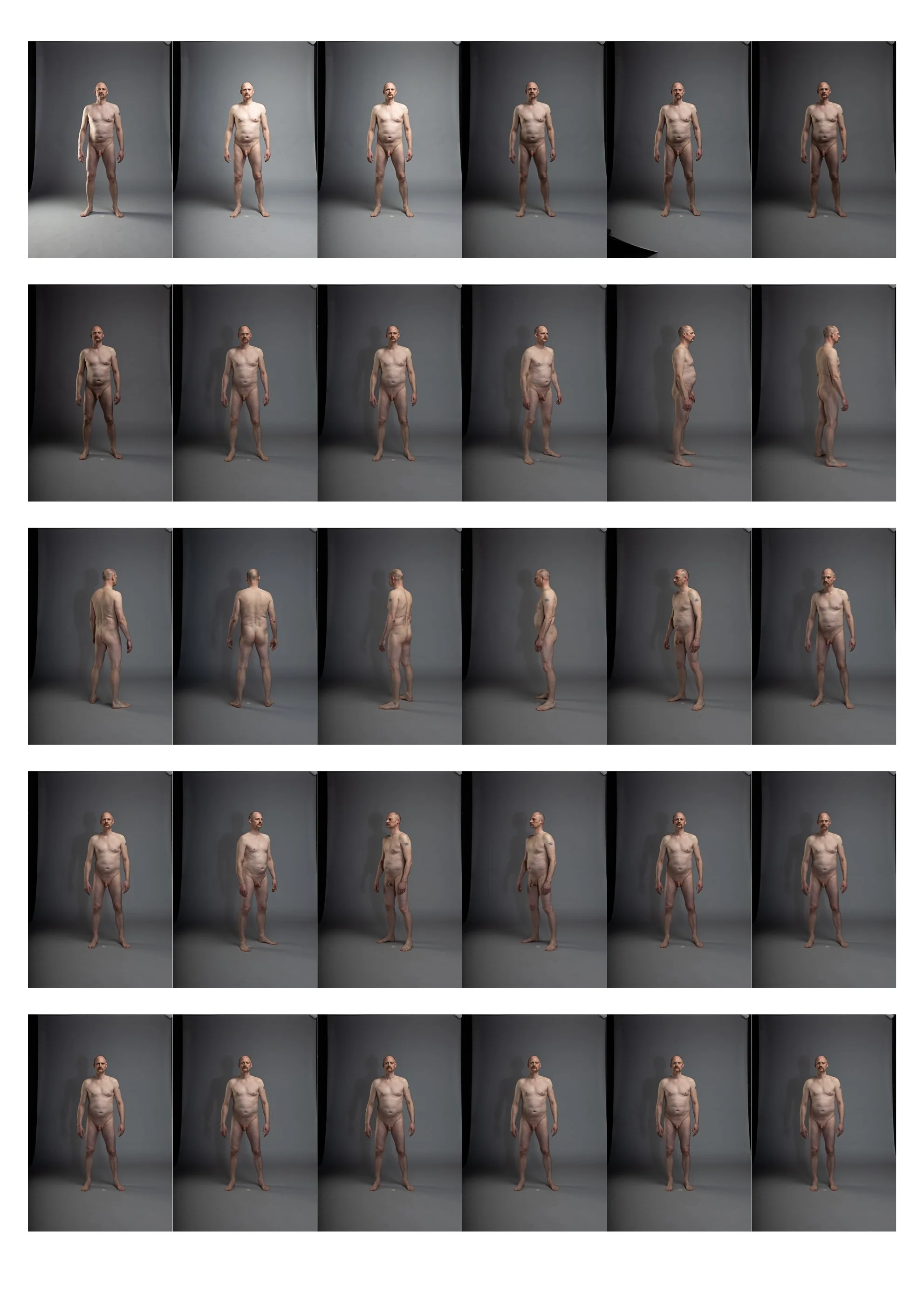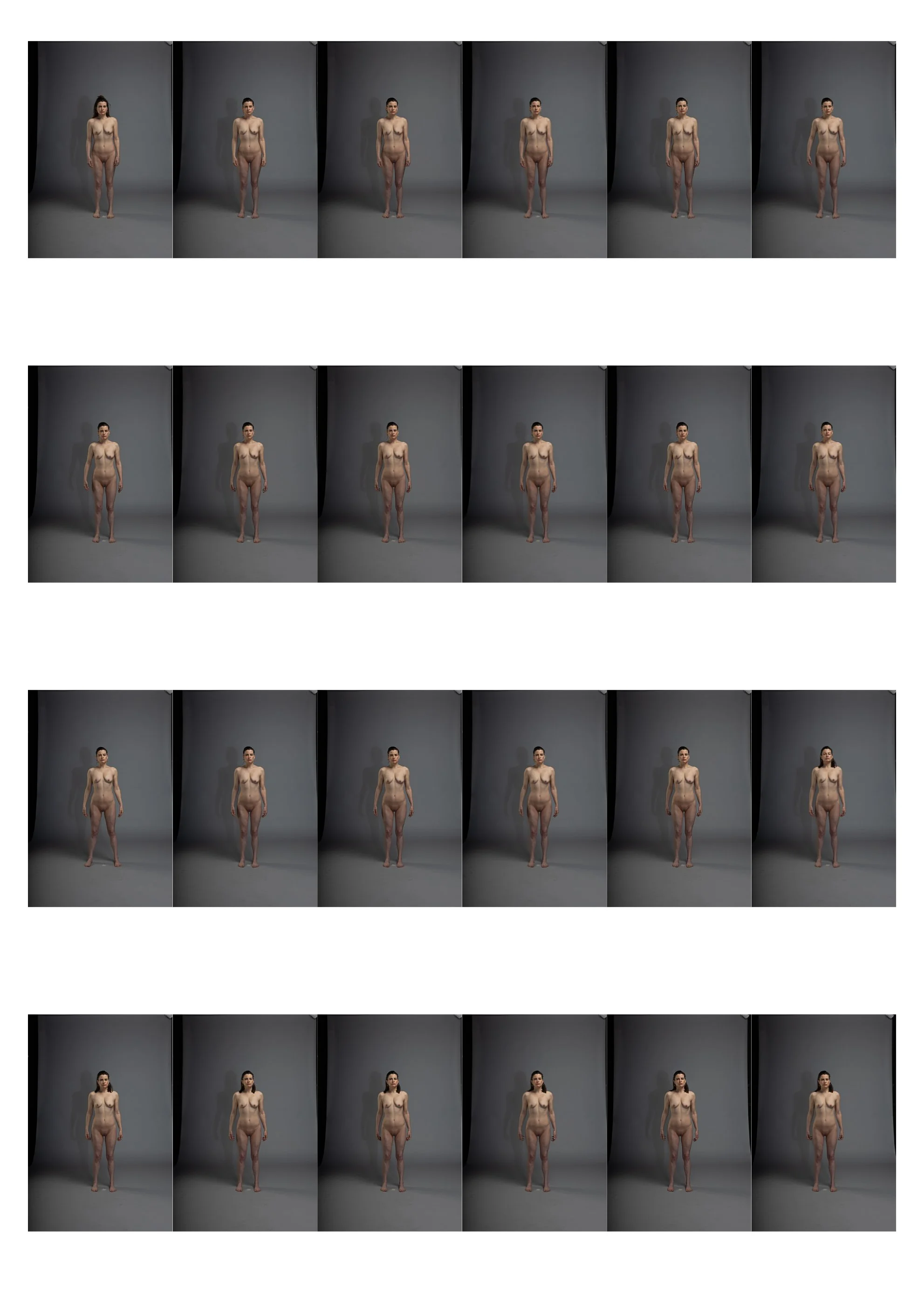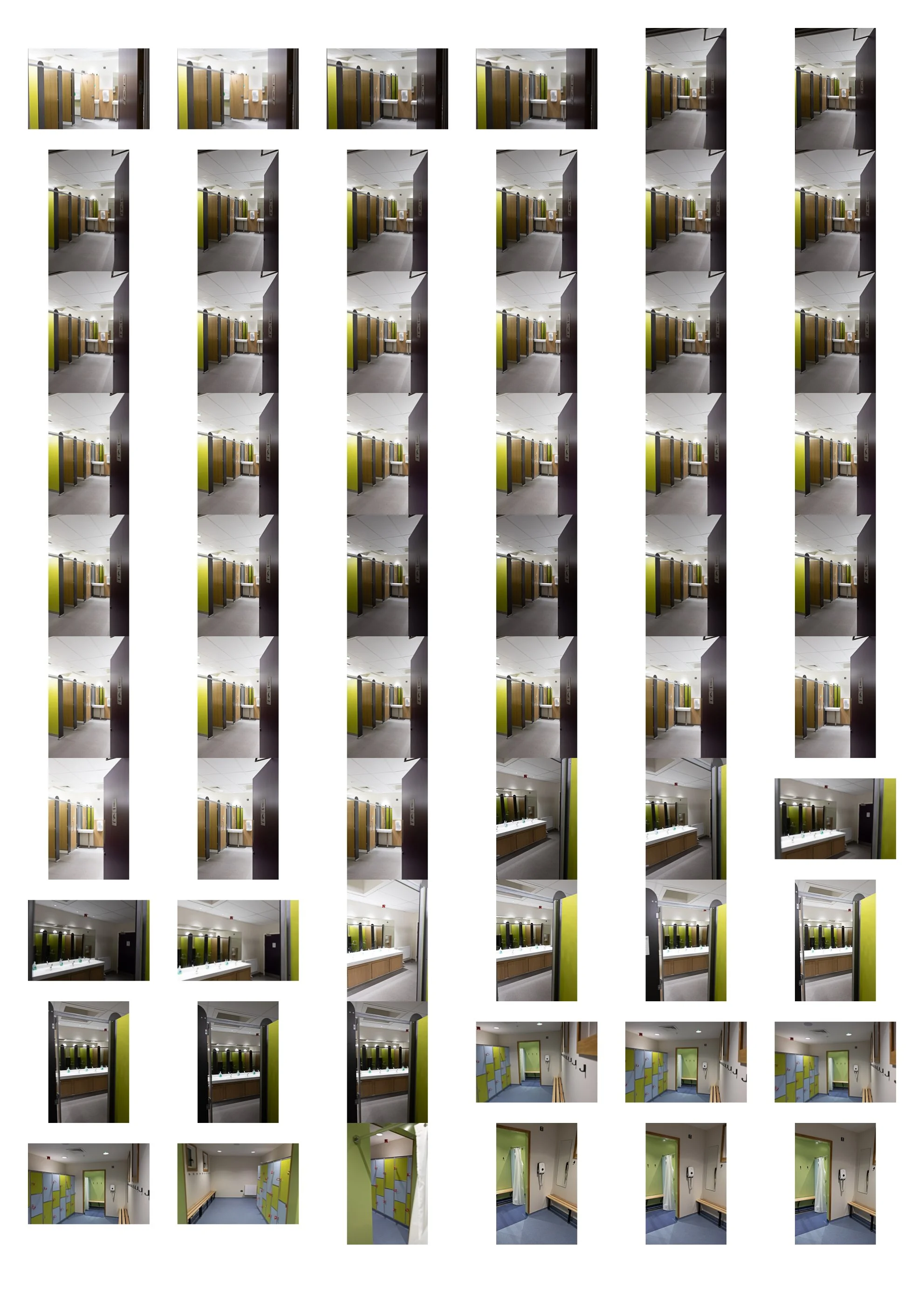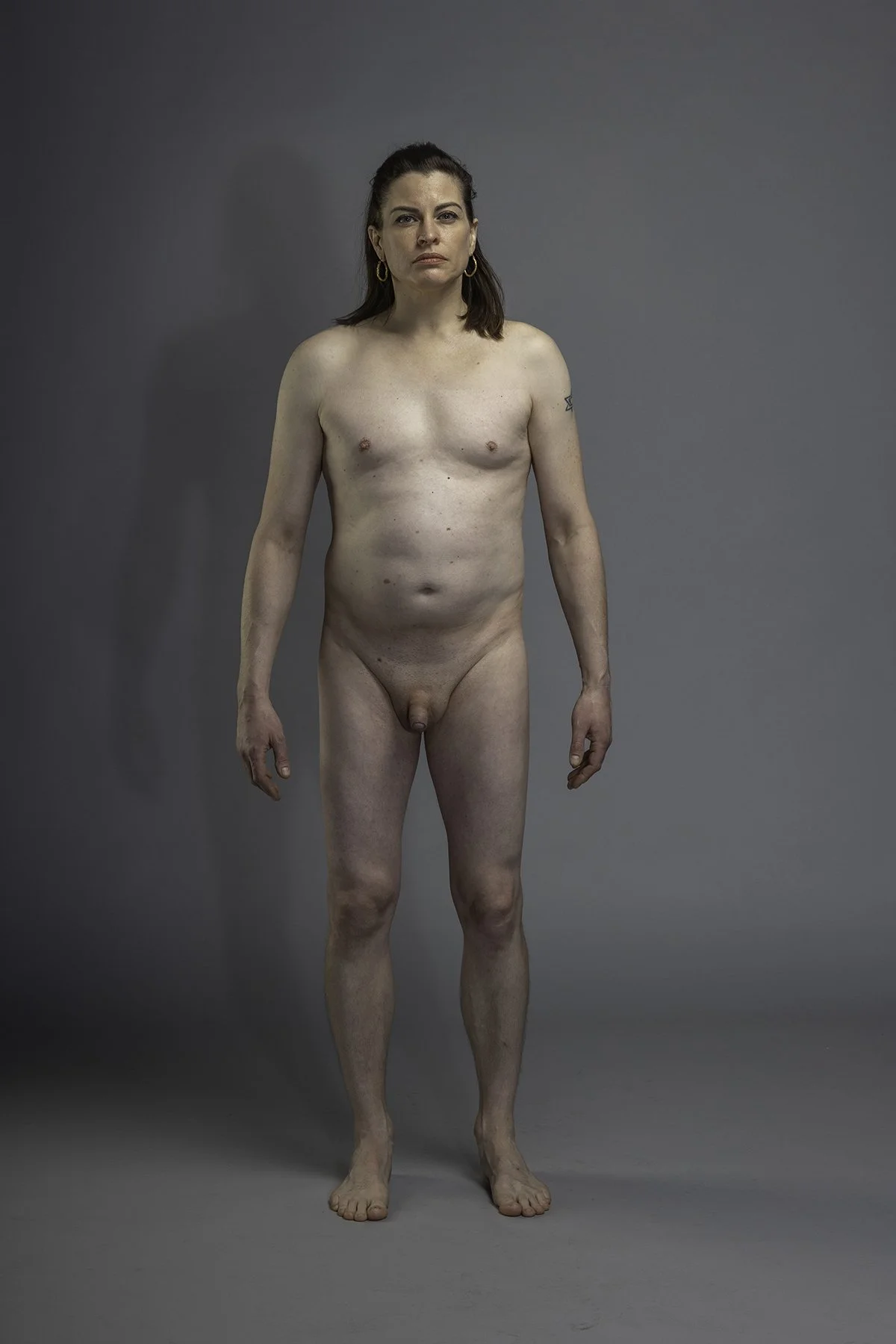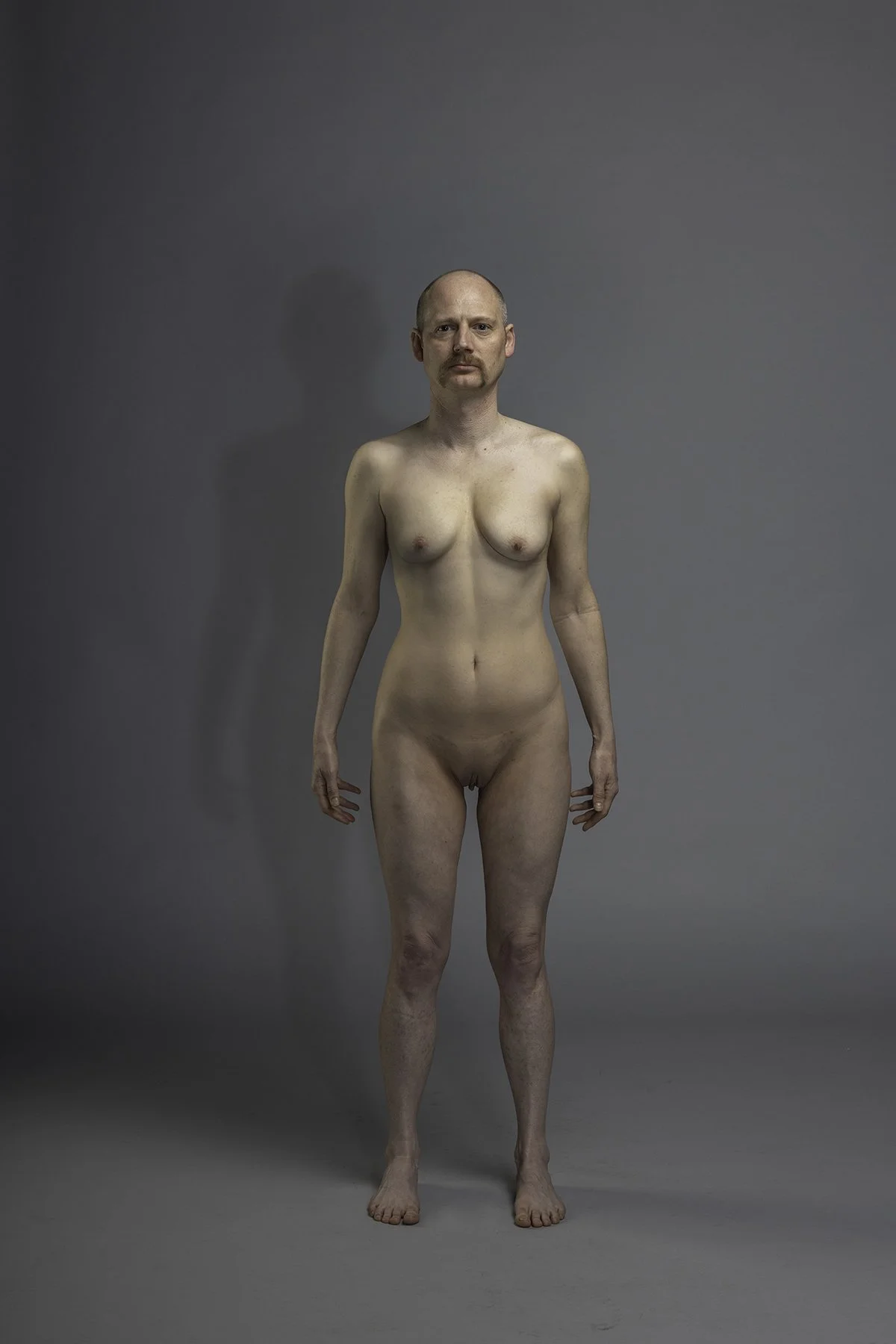Reflections - Testing Out of Place
Summary of intended project
Informed by lived experience, recent developments in psychoanalytic theory, psychology and gender theory, I start from the position that while the facts of biological sex are important to acknowledge regarding the formation of gender identity, all humans are psychically bi-gendered, possessing internally both “male” and “female” aspects of the psyche. As Psychoanalyst Michael J Diamond puts it, “…although every female and male must live in this binary, in terms of the psyche, no one is actually of the binary” (Diamond, 2021, p113). I am therefore especially interested in the conflict between the bi-gendered interior world of the individual and the polarised gender-binary extant in the external material and socio-cultural world.
My intention is to visuallyExplore and represent the conflict between our inherent psychic bi-gendered-ness and the polarised binaries of sex and biological difference which provide the socio-cultural framework within which we construct and express our gender identities.
In exploring my partner’s and my own sense of being internally bi-gendered, I am creating a series of images where a male and female body are combined in photoshop producing gender-ambiguous beings but placed in socially gendered spaces.
Gendered spaces I have so far identified to utilise in staging these images include public toilets, sporting changing rooms, prison, hospital/medical settings, schools and a women’s refuge.
Exploratory practice reflection:
As is often the case when I begin work on a new project, I already had some images in my mind, images that have resulted from a moment of inspiration following a period of research, discussion and gestation. These mental images are not fully formed but they function as an initial goal to work toward. From this point I will either write a description, make a sketch, or if possible, make some test shots, perhaps even all three. In the case of testing the Out of Place images, it would have been problematic to begin shooting on location due to the nudity and public/semi-public settings. I therefore decided to avoid the logistical challenges and costs of location shooting and get started by shooting the human subjects in the studio and composite them into the photographed locations after the event. Knowing this method would not give entirely satisfactory results, it would at least provide some useful learnings for the project proper.
While it is technically feasible to shoot and produce the final pieces in this way, I would prefer not to. However, although it is without-doubt more time consuming and technically difficult, and while I do want to minimise unnecessary work and difficulty, this is not the primary reason for wanting to shoot the final pieces on location. The key reason is that to be fully effective, the finished images should only jar with the viewer for the right reasons. I want the subjects with their ambiguous gender to be believable both in their uncommon anatomy, but also in their being situated in that specific space. In other words, I want the cognitive dissonance to come from the contradiction between a familiar type of place and the being; the body, that while difficult to classify, still seems Out of Place.
Regardless of the production method I eventually employ, I start with my goal in mind, that of the mental images that my non-practice research generated. In this instance, the first image that came to me, loosely formed was that of a gender-blended body, male with female elements standing naked in a “female” public toilet of sorts. I imagined the drab or block colours of an institutional space and harsh unflattering lighting illuminating repeated design and utility elements such as cubicles and sinks. My composite, ambiguous body is standing facing the camera with the gendered environment as a backdrop. I imagine the expression as frank without being overly confrontational, the figure stands straight, arms hanging by their side. It is the topographical approach to photographing the body that I have used on occasions before, a non-sexualised body that seems to invite scrutiny and understanding. This then is how I resolved to photograph the bodies (my partners and my own) in the studio for these tests.
Fortunately, I happen to work part-time in a local community centre which is a fairly new facility and had toilets that seemed they might suit my purposes. Prior to visiting the studio, I snapped some reference shots of the toilets at work to get an idea of the quality and direction(s) of light. In the studio I tried to emulate the sort of light seen on the location. Ultimately this involved using a large, diffused light (Octabox on a boom arm) as a key-light above and to the front of the subject, off to one side, a long and tall diffused light (vertical-strip soft-box) just behind and off to the side and a third, less diffused light (large beauty dish) positioned at camera height and situated between the camera and the key-light. With a little experimentation I managed to get the balance of the three lights to a ratio I was happy with, providing interesting modelling to the subject with shadows and highlights while also mimicking in essence the way the various light sources in the reference location either directly or via reflection, illuminated the space in a complex way.
I was then able to begin photographing myself with my partner assisting, pressing the shutter-release button and providing feedback in between my frequent visits to view the results on the back of the camera. Initially I began photographing myself not only full-frontal and parallel to the camera but also through incremental turns of approximately fifteen to twenty degrees. After reviewing these however, I then decided that for the sake of these tests I was probably overcomplicating things, as without taking time (that I didn’t have) to ensure that the bodies of myself and my partner were identically angled, the composite work in photoshop could very well end up being impossible to achieve to an acceptable standard. This of course was a useful insight to carry forward to the construction of the final images, that great care and accuracy would be required when shooting subjects to composite together, that their position, orientation and alignment within the space would need to be consistent and precise.
Once I had several images of myself where I was happy with both the expression and pose, I was able to move on to photographing the female body of my partner. What instantly became apparent was the difference between the default stance that each of us took when standing to be photographed, I would stand with my feet shoulder width apart whereas my partner would stand with her feet much closer together. Just in case this might prove problematic in the composite beings I wanted to create, I got some shots of my partner in a stance matching mine and covered off some more shots of myself with my feet closer together like hers. This provides me with options at the compositing stage. Confident that I now had enough images of our male and female bodies to make some successful composite beings I wrapped up the studio shoot knowing I would need to return to the toilets at my place of work with camera and tripod to take some shots into which I could add the composite beings I would produce.
Returning with my camera to shoot the toilets proper I realised I had been complacent when taking reference snapshots with my phone. A smart phone of course has a very wide-angle lens by default and therefore gives a sense of space that is hard to achieve with my high-resolution camera without resorting to specialist lenses which might also introduce distortion and not match the perspective of the lens used to photograph my human subjects. This meant I had to resort to shooting from outside of the toilets, looking through the door to capture enough of the scene to be useful. On the plus side, I was able to include the signage on the toilet door which, aside from the number of cubicles within, was the only indicator of the space as gendered. For my final practice pieces however, I think I would prefer not to have to rely on the signage to identify the gendered space and rather use the visual cues of multiple cubicles and no urinals, or conversely multiple urinals for example. Perhaps I might even include non-ambiguous, or at least, some less ambiguously gendered bodies in locations other than toilet facilities such as a sports/gym changing room for example.
Before even thinking about compositing my gender-ambiguous beings into any location however, I first had to create them. My first instinct was to digitally graft my partners breasts and vulva onto my own body, replacing my chest, penis and testicles. I would then go on to do the reverse operation, grafting my body parts onto her body. It was only when my compositing of these beings was underway that it occurred to me, I could also as an alternative method, swap our heads, putting my “masculine” head on my partners “feminine” body and vice-versa. This made me reflect on the fact that my default position was to situate the gender in the breasts and visible parts of the genitalia. It should have been no surprise perhaps as I had always intended to do such digital surgery. Of course, it also reflects what actual surgery we might expect somebody transitioning from one gender/sex to another to have, but in the act of doing it felt remarkably reductive. Anyhow, for me this work is not as much about the body as some of my previous work and in these images the gendered body or even the bi-gendered body is used as a visible proxy for the invisible interior spaces of the subject beings. Additionally, by representing the psychic form via the physical, I hope to comment on the way that culturally we too-much rely on biological difference to discern and justify reasons to treat people differently, or even behave differently ourselves.
The process of creating the first composite beings was relatively straightforward and successful. This was partly due to the preparation work I had done before and carefully lighting, positioning and shooting the subjects with my goal in mind. I even went as far to remove the small amount of pubic hair I usually leave unshaven to match the fully shaven pubic region of my partner. Not only did this make things technically easier, but it also avoided the question of difference. Any element of the bodies or the final images can convey meaning and imply intention. I did not want particularly to make any statement in these images about individual preferences or even wider social connotations about intimate grooming, so felt that not embedding an arbitrary difference (in this case) would somewhat neutralise this question which might ultimately detract from my primary concerns.
When actually superimposing my partners body parts onto the canvas of my body one thing that struck me was the difference of our proportions. I have always seen her as having strong shoulders, along with the rest of her hourglass figure which to me seems very feminine. It none-the less surprised me how much I had to stretch her chest to match my significantly broader frame. I have never seen myself as having a particularly macho body and couldn’t help but think this was as much a cause of my surprise as any actual difference between our proportions. What was further interesting to note however, was that once I had completed the rough digital compositing of my partners body parts on to my body and vice-versa, was that the difference in our body shapes was more noticeable than the differences determined by our breasts/chests and visible genitalia. This is how I was affected by the images anyhow; there was more dissonance for me seeing my head on my partners body and hers on mine than there was in either of the images where chest and groin areas had been swapped. While there are many practical advantages to using one’s own body especially for testing, I think I need to recognise that it is problematic in terms of separating my own self-image from any response to the results.
I know also that while my partner is fully supportive of the work and was willing to help in making these experiments, that her own problematic self-image made for a very challenging relationship with the images for her, but this was just as true of the naked pictures of her prior to any digital manipulation. In fact, her negative reaction to seeing the images surprised me in its strength and made extremely clear to me how her experience of unrealistic beauty and body-shape standards had negatively impacted her. This was exacerbated by the fact that I find her body incredibly attractive and having photographed lots of bodies felt that she was judging herself unduly harshly. Of course, it was never my intention to photograph our bodies for the purposes of flattery, titillation or beautification, and rarely do we see pictures of women’s bodies that are not photographed for these purposes, so her reaction should not have been entirely surprising. Never-the-less, it made me feel very angry (at the structures which are to blame) that she should feel so negatively about herself.
This discussion about self-body-image provides a neat segue to my consideration of ethics in producing the work. My partner made very clear when agreeing to assist me in making these test images that she was only happy to participate on the basis that it was an exercise only in proof of concept and learning, and that her identity must remain undisclosed and any images that identify her must be deleted once they have served their purpose. It should go without saying that I was more than happy to agree to her right to veto such revealing images. When sourcing models or actors to photograph for the final pieces, I shall of course ensure that not only the required model release forms but also my communication regarding participation will make clear the subject matter and my hopes for dissemination. As I have found previously with shooting for my doll-human composite images, some people are happy to get on board with and be associated with a challenging project, while others don’t feel it aligns with their position or aspirations. This does give me hope that I will be able to identify subjects that I can bring along with me on the journey and whom can get invested in the success of the project.

